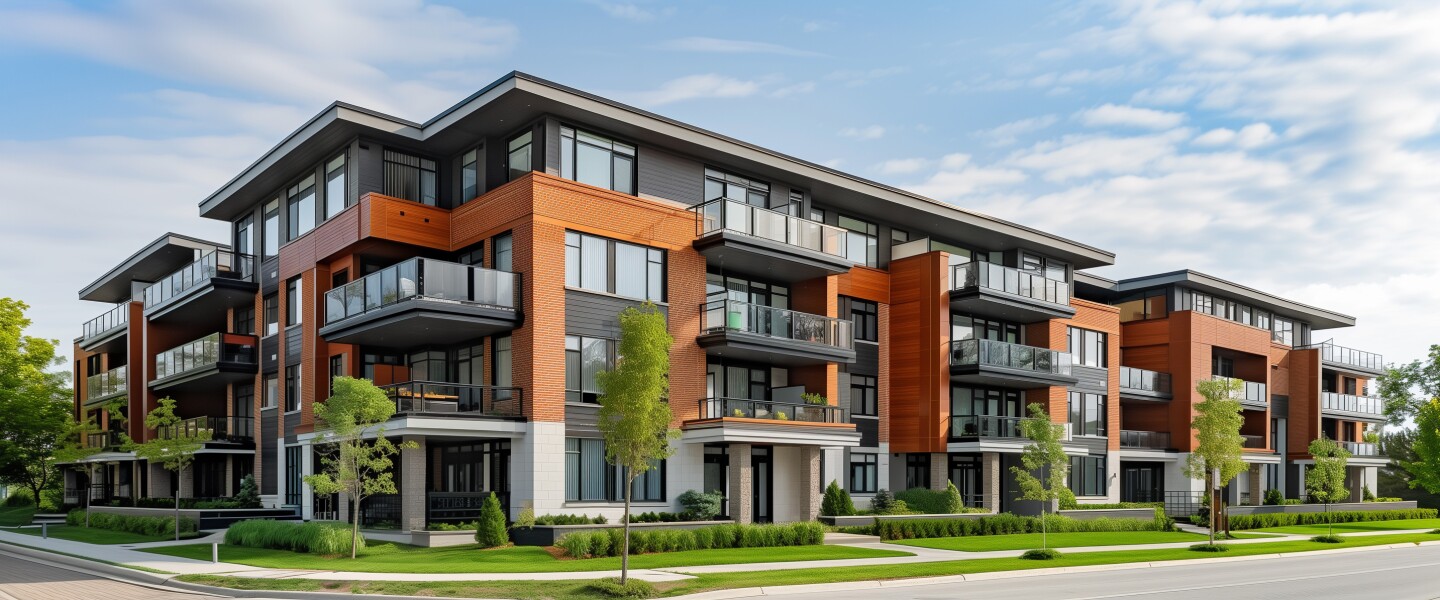September, 2024
At RealtyMogul, we see hundreds of multifamily deals a year and based on our data, it’s clear the opportunities are finally here for distressed multifamily deals Now this does not mean that every multifamily deal in the country has bottomed, but it does mean that distress is finally here – deals are trading, and lenders are getting more aggressive on moving to foreclosure if required.
A great example of what we are seeing is a recent deal we underwrote in Jacksonville, FL.
- We originally underwrote the deal – and got outbid on it – back in 2022.
- The property is a 240-unit multifamily property and was sold for approximately $40 million, equating to $185k per unit in 2022.
- The new owner invested several million in capital improvements and successfully renovated nearly 50% of the units.
- Despite these efforts, the property is now listed at a significantly reduced price sub $30 million, due to distress faced by the seller.
- The seller got hit with two major challenges: 1) floating rate debt and an inability to refinance and 2) higher operating expenses due to taxes and insurance.
- Regarding the floating rate debt, interest rates have increased materially since the seller acquired the property. Given this move in rates, a cash neutral refinance is not a possibility, and the seller would have to put in significant cash to achieve a refinance.
- The property also incurred much higher property tax increases and insurance cost increases than forecasted.
- Given the higher interest expenses and the higher operating expenses, the property is not cash flowing, so the seller is not able to continue investing in the property and re-leasing units as they become vacant.
- This has led to declines in occupancy and a downward spiral.
- Lower occupancy means less revenue, less revenue coupled with fixed costs like taxes and insurance led to lower net operating income. Lower net operating income leads to lower value and lower loan proceeds if a refinance were on the table.
- Despite efforts to restructure the debt with the lender, the seller’s capital partners are abandoning the investment rather than funding capital calls to pay for debt service and restructure the debt.
- This is ultimately leading to the distressed sale of the property at a substantial discount.
While this case study is just one example, we are seeing this same sequence of events play out in multifamily across the country. And the timing is no surprise.
The biggest driver of the decline in multifamily valuations has been the high interest rate environment relative to when deals were underwritten several years ago. In general, floating rate debt is originated with a three-year term and a significant amount of floating rate debt was originated in 2021 and 2022. That debt is now coming due. It puts property owners under pressure to find equity for a cash-in refinance or at a minimum to extend the floating rate debt and invest more capital to purchase new interest rate caps that the lender requires for floating rate loans. This has resulted in suspended distributions and capital calls. And for those properties that cannot come up with the equity, we are seeing forced sellers, typically at meaningful discounts to the valuations from 2021 and 2022.
This situation has been exacerbated by material increases in operating expenses – both labor and insurance; further causing some sellers to exit the markets at higher cap rates.
And lastly, over supply has been another factor in several markets where the frothiness from 2021 has led to increased apartment units coming online, outpacing demand, leading to lower rent rates and less revenue for property owners.
Why We Believe the Market Is Bottoming Out
Given these trends, one might expect valuations to continue to decline. However, we are seeing multiple indicators that the market has an opportunity to bounce back.
Inflation and interest rates:
Recent inflation reports have resulted in a pause in rate hikes and now there is anticipation of at least one rate cut in the fall this year. While rate cuts may be fewer and take longer to materialize, the market is feeling incrementally better from a buyer’s perspective, suggesting that we may be approaching a more stable phase in the market. There is also significant dry powder on the sidelines waiting to enter the market, and a rate cut might well be the signal for this capital to enter the market.
Affordability Gap:
The housing affordability gap has been widening since 2020, with monthly mortgage payments on new mortgages doubling since 2021. Home buying costs have been growing at twice the rate of incomes, further exacerbating the challenge of homeownership. This affordability crisis pushes more households into the rental market, increasing the demand for multifamily housing.
Demographic Trends:
Demographic shifts are also influencing housing trends, with the median age of first-time home buyers continuing to rise, currently at 35 years old, up from 29 in 1981. This in turn is increasing overall apartment demand as households opt to remain renters for longer periods. Younger generations are delaying homeownership, contributing to sustained demand in the rental market.
By the time the Fed starts to cut interest rates again, we think you’ll be beyond the market bottom.
While we don’t have a crystal ball to know the exact shape of the recovery curve in multifamily, we believe that this is an interesting window for investors to invest in properties at compelling values with the potential for value appreciation as market conditions stabilize and improve.
This article is for informational purposes only, and is not a recommendation or offer to buy or sell securities. Information herein may include forward looking statements and is for informational purposes only. Forward-looking statements, hypothetical information, or calculations, financial estimates and targeted returns are inherently uncertain. Past performance is never indicative of future performance. None of the opinions expressed are the opinions of RealtyMogul. Advice from a securities professional is strongly advised, and we recommend that you consult with a financial advisor, attorney, accountant, and any other professional that can help you to understand and assess the risks and tax consequences associated with any real estate investment. All real estate investments are speculative and involve substantial risk and there can be no assurance that any investor will not suffer significant losses. A loss of part or all of the principal value of a real estate investment may occur. All prospective investors should not invest unless such prospective investor can readily bear the consequences of such loss.
RealtyMogul and its affiliates are not registered as a crowdfunding portal. Unless stated otherwise in writing, RealtyMogul and its affiliates do not offer brokerage or investment advisory services to the Platform’s individual users. RM Adviser, LLC, a wholly owned subsidiary of RealtyMogul, is an SEC-registered investment adviser providing investment management services exclusively to certain REITs and single purpose funds. Past performance is not indicative of future results. Forward-looking statements, hypothetical information or calculations, financial estimates, projections and targeted returns are inherently uncertain. Such information should not be used as a primary basis for an investor’s decision to invest. Investments in real estate, including those offered by sponsors using the RealtyMogul platform, are speculative and involve substantial risk. You should not invest unless you can sustain the risk of loss of capital, including the risk of total loss of capital.

